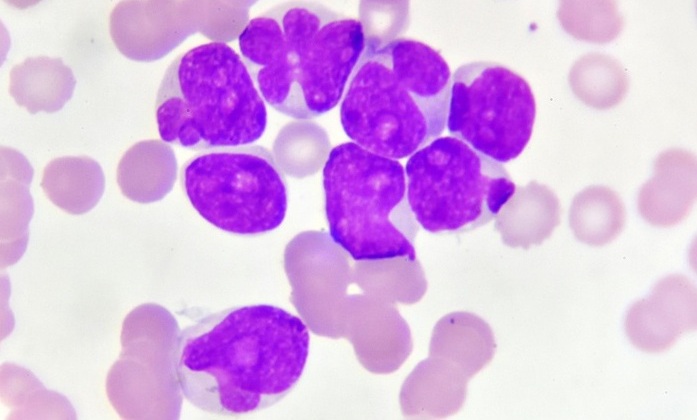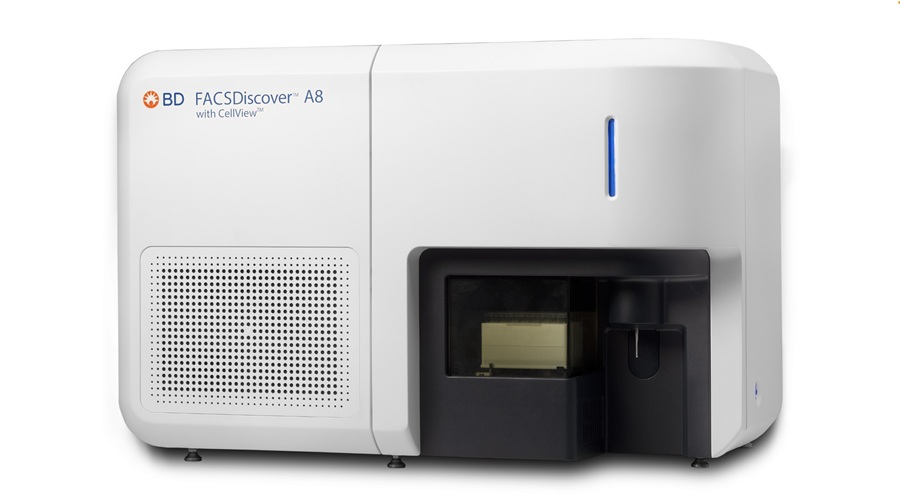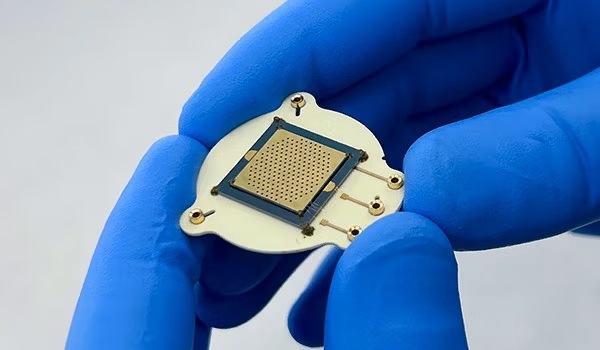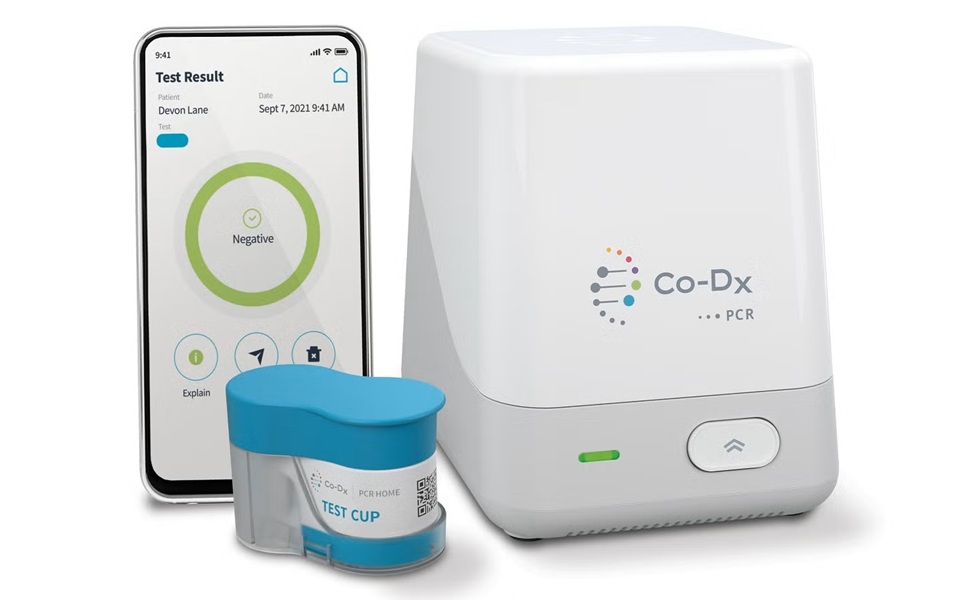Identification of Single Biomolecules Could Soon Be Even Faster
|
By LabMedica International staff writers Posted on 08 Feb 2016 |
Scientists have developed a breakthrough new method that may soon enable the capture of individual biological molecules 1,000 times faster, leading to more efficient research and diagnostic detection for important medical conditions.
Gathering and identifying molecules for analysis can be done by passing molecules in solution through a nanopore and detecting the change in electric current the molecules create. The problem with this technique, “nanopore sensing,” is that it is usually diffusion-limited, and so relies on molecules drifting close to the nanopore before being captured.
Now, a team led by researchers at Imperial College London (London, UK) in collaboration with colleagues at University of Minnesota (Minneapolis – St. Paul; MN; USA) have demonstrated a technique to attract molecules towards the nanopore, making the process up to 1,000 times more efficient.
“By pulling molecules towards the detector instead of relying purely on diffusion, we can access a much larger volume, and by doing so can detect the same number of molecules from a much smaller concentration,” said senior author Dr. Joshua Edel from Imperial, “What might currently take 5 hours to analyze could be done in a couple of minutes with our new method.”
The technique, “single molecule dielectrophoretic trapping,” will also allow for analysis of very dilute samples. Capability to analyze molecules in low-concentration samples could be particularly important when looking for evidence of epigenetic modifications such as DNA methylation. The team tested their method with DNA molecules, but said it could be modified to detect a wide range of medically important molecules, from proteins to whole cells.
The technique uses an electrically-charged nano-pipette that exerts an electrical attraction force on the molecule that draws it close to the pipette tip, the nanopore. The shape and minute size of the tip, less than 50 nanometres, enables detection of single molecules.
Detecting and analyzing each molecule individually also avoids the problem of averaged results that obscure rare, but possibly important, events. “We can now capture needle-in-a-haystack events,” said coauthors Dr. Aleksandar Ivanov and Dr. Kevin Freedman of Imperial. “The huge increase in efficiency brought about by this technique paves the way for high-speed and high-throughput detection of rare events in ultra-dilute samples.” The team has filed a patent for their invention and expect that it will have application implications in the near future.
The study, by Freedman KJ et al., was published 2016, in the journal Nature Communications.
Related Links:
Imperial College London
University of Minnesota
Gathering and identifying molecules for analysis can be done by passing molecules in solution through a nanopore and detecting the change in electric current the molecules create. The problem with this technique, “nanopore sensing,” is that it is usually diffusion-limited, and so relies on molecules drifting close to the nanopore before being captured.
Now, a team led by researchers at Imperial College London (London, UK) in collaboration with colleagues at University of Minnesota (Minneapolis – St. Paul; MN; USA) have demonstrated a technique to attract molecules towards the nanopore, making the process up to 1,000 times more efficient.
“By pulling molecules towards the detector instead of relying purely on diffusion, we can access a much larger volume, and by doing so can detect the same number of molecules from a much smaller concentration,” said senior author Dr. Joshua Edel from Imperial, “What might currently take 5 hours to analyze could be done in a couple of minutes with our new method.”
The technique, “single molecule dielectrophoretic trapping,” will also allow for analysis of very dilute samples. Capability to analyze molecules in low-concentration samples could be particularly important when looking for evidence of epigenetic modifications such as DNA methylation. The team tested their method with DNA molecules, but said it could be modified to detect a wide range of medically important molecules, from proteins to whole cells.
The technique uses an electrically-charged nano-pipette that exerts an electrical attraction force on the molecule that draws it close to the pipette tip, the nanopore. The shape and minute size of the tip, less than 50 nanometres, enables detection of single molecules.
Detecting and analyzing each molecule individually also avoids the problem of averaged results that obscure rare, but possibly important, events. “We can now capture needle-in-a-haystack events,” said coauthors Dr. Aleksandar Ivanov and Dr. Kevin Freedman of Imperial. “The huge increase in efficiency brought about by this technique paves the way for high-speed and high-throughput detection of rare events in ultra-dilute samples.” The team has filed a patent for their invention and expect that it will have application implications in the near future.
The study, by Freedman KJ et al., was published 2016, in the journal Nature Communications.
Related Links:
Imperial College London
University of Minnesota
Latest Molecular Diagnostics News
- Sepsis Test Demonstrates Strong Performance in Post-Cardiac Surgery Patients
- Next-Gen Automated ELISA System Elevates Laboratory Performance
- Blood Test Combined with MRI Brain Scans Reveals Two Distinct Multiple Sclerosis Types
- At-Home Blood Tests Accurately Detect Key Alzheimer's Biomarkers
- Ultra-Sensitive Blood Biomarkers Enable Population-Scale Insights into Alzheimer’s Pathology
- Blood Test Could Predict Death Risk in World’s Most Common Inherited Heart Disease
- Rapid POC Hepatitis C Test Provides Results Within One Hour
- New Biomarkers Predict Disease Severity in Children with RSV Bronchiolitis
- CTC Measurement Blood Test Guides Treatment Decisions in Metastatic Breast Cancer Subtype
- Multiplex Antibody Assay Could Transform Hepatitis B Immunity Testing
- Genetic Testing Improves Comprehensive Risk-Based Screening for Breast Cancer
- Urine Test Could Reveal Real Age and Life Span
- Genomic Test Identifies African Americans at Risk for Early Prostate Cancer Recurrence
- Blood Test Could Identify Biomarker Signature of Cerebral Malaria
- World’s First Biomarker Blood Test to Assess MS Progression
- Neuron-Derived Extracellular Vesicles Could Improve Alzheimer’s Diagnosis
Channels
Clinical Chemistry
view channel
Blood Test Could Predict and Identify Early Relapses in Myeloma Patients
Multiple myeloma is an incurable cancer of the bone marrow, and while many patients now live for more than a decade after diagnosis, a significant proportion relapse much earlier with poor outcomes.... Read more
Compact Raman Imaging System Detects Subtle Tumor Signals
Accurate cancer diagnosis often depends on labor-intensive tissue staining and expert pathological review, which can delay results and limit access to rapid screening. These conventional methods also make... Read moreMolecular Diagnostics
view channel
Sepsis Test Demonstrates Strong Performance in Post-Cardiac Surgery Patients
Sepsis is difficult to diagnose accurately in patients recovering from major surgery, as infection-related symptoms often overlap with non-infectious systemic inflammatory responses. This challenge is... Read more
Next-Gen Automated ELISA System Elevates Laboratory Performance
A next-generation automated ELISA system is designed to elevate laboratory performance through advanced workflow automation, enhanced connectivity, and a modernized user experience. DYNEX Technologies... Read more
At-Home Blood Tests Accurately Detect Key Alzheimer's Biomarkers
Diagnosing Alzheimer’s disease typically relies on brain scans or spinal fluid tests, which are invasive, costly, and difficult to access outside specialist clinics. These barriers have limited large-scale... Read more
Blood Test Combined with MRI Brain Scans Reveals Two Distinct Multiple Sclerosis Types
Multiple sclerosis (MS) affects more than 2.8 million people worldwide, yet predicting how the disease will progress in individual patients remains difficult. Current MS classifications are based on clinical... Read moreHematology
view channel
MRD Tests Could Predict Survival in Leukemia Patients
Acute myeloid leukemia is an aggressive blood cancer that disrupts normal blood cell production and often relapses even after intensive treatment. Clinicians currently lack early, reliable markers to predict... Read more
Platelet Activity Blood Test in Middle Age Could Identify Early Alzheimer’s Risk
Early detection of Alzheimer’s disease remains one of the biggest unmet needs in neurology, particularly because the biological changes underlying the disorder begin decades before memory symptoms appear.... Read more
Microvesicles Measurement Could Detect Vascular Injury in Sickle Cell Disease Patients
Assessing disease severity in sickle cell disease (SCD) remains challenging, especially when trying to predict hemolysis, vascular injury, and risk of complications such as vaso-occlusive crises.... Read more
ADLM’s New Coagulation Testing Guidance to Improve Care for Patients on Blood Thinners
Direct oral anticoagulants (DOACs) are one of the most common types of blood thinners. Patients take them to prevent a host of complications that could arise from blood clotting, including stroke, deep... Read moreImmunology
view channel
Ultrasensitive Liquid Biopsy Demonstrates Efficacy in Predicting Immunotherapy Response
Immunotherapy has transformed cancer treatment, but only a small proportion of patients experience lasting benefit, with response rates often remaining between 10% and 20%. Clinicians currently lack reliable... Read more
Blood Test Could Identify Colon Cancer Patients to Benefit from NSAIDs
Colon cancer remains a major cause of cancer-related illness, with many patients facing relapse even after surgery and chemotherapy. Up to 40% of people with stage III disease experience recurrence, highlighting... Read moreMicrobiology
view channel
New UTI Diagnosis Method Delivers Antibiotic Resistance Results 24 Hours Earlier
Urinary tract infections affect around 152 million people every year, making them one of the most common bacterial infections worldwide. In routine medical practice, diagnosis often relies on rapid urine... Read more
Breakthroughs in Microbial Analysis to Enhance Disease Prediction
Microorganisms shape human health, ecosystems, and the planet’s climate, yet identifying them and understanding how they are related remains a major scientific challenge. Even with modern DNA sequencing,... Read morePathology
view channel
ADLM Updates Expert Guidance on Urine Drug Testing for Patients in Emergency Departments
Urine drug testing plays a critical role in the emergency department, particularly for patients presenting with suspected overdose or altered mental status. Accurate and timely results can directly influence... Read more
New Age-Based Blood Test Thresholds to Catch Ovarian Cancer Earlier
Ovarian cancer affects around one in 50 women during their lifetime, with roughly 7,000 diagnoses each year in the UK. The disease is often detected late because symptoms such as bloating, abdominal pain,... Read moreIndustry
view channel
BD and Penn Institute Collaborate to Advance Immunotherapy through Flow Cytometry
BD (Becton, Dickinson and Company, Franklin Lakes, NJ, USA) has entered into a strategic collaboration with the Institute for Immunology and Immune Health (I3H, Philadelphia, PA, USA) at the University... Read more







 Analyzer.jpg)











